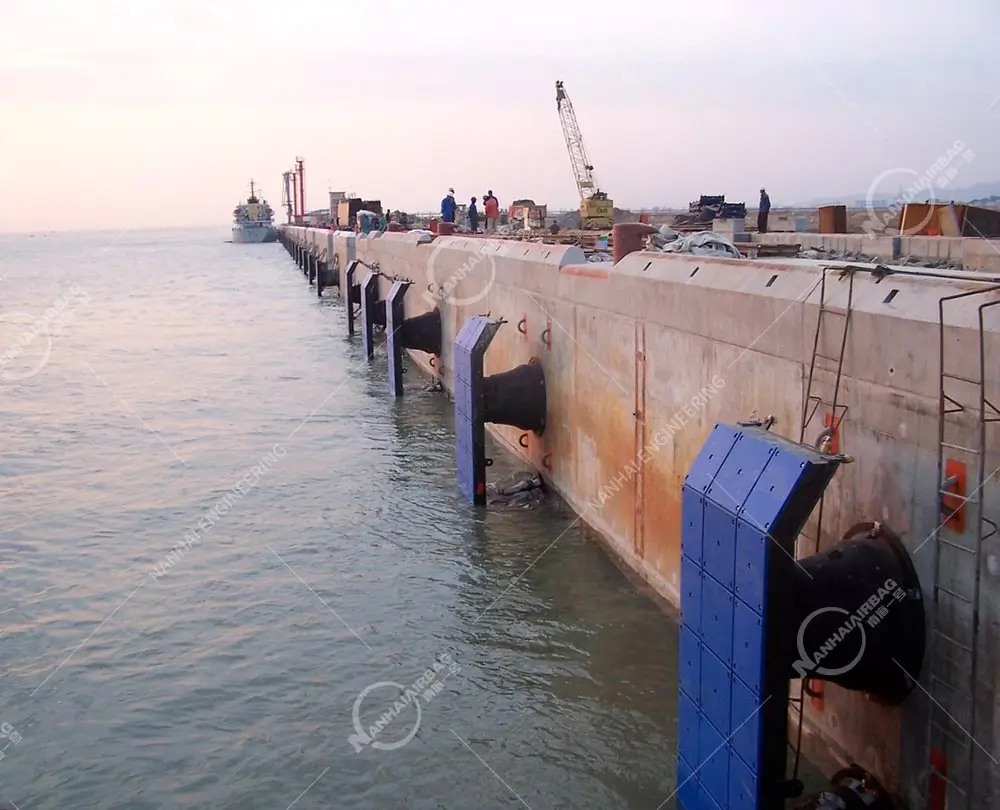How to Inflate and Exhaust the Inflatable Pneumatic Fenders?
06/09/2025Chain design of anchor chain guard on rubber fender
06/10/2025Maintenance matters of rubber fenders
Keep Your Marine Fenders Performing Safely and Reliably

Why Rubber Fender Maintenance Matters
In the world of marine operations, safety is everything. Rubber fenders—often the first point of contact between a ship and the dock—play a silent but critical role. They absorb impact, protect the vessel’s hull, and shield the port structure. But just like tires on a vehicle, marine rubber fenders don’t last forever.
Take, for example, a busy port that recently suffered vessel damage due to worn fenders. No one had checked them in months. It wasn’t until scratches and hull damage started appearing that the issue was traced to cracked fenders and loose fixings. This is exactly why regular maintenance is not just helpful—it’s essential.
Rubber Fender Systems Are Not Just “Install and Forget”
As large-ship fender systems often include complex structures like frontal panels to reduce surface pressure on hulls, their maintenance is more demanding than standard fenders. If any part of this structure fails, the whole protective function is compromised, risking both ship safety and dock integrity.
Routine Inspection Guidelines: What to Check and How Often
After the rubber fenders are installed, inspections should occur every time for the first three vessels, and then monthly afterward.
Here’s what to focus on during inspection:
- Check anchor bolts and frontal panel bolts for looseness.
Tighten if necessary, and spot-weld the fixing bolts and plates for secure installation. - Look for cracks or cuts in the rubber body.
Deep tears are red flags—contact your marine rubber fenders manufacturer immediately. - Inspect the frontal panel for dents, corrosion, or cracks.
If any are found, prompt replacement or anti-rust treatment (at least once a year) is advised. - Ensure the panel isn’t tilting forward.
Buildup of materials behind the panel often causes this. Clean it regularly. - Look for scratches or pressure damage on the panel surface.
Damaged surface plates must be replaced without delay. - Examine the concrete base for cracks.
Report any issues to the civil engineering staff for reinforcement. - Check the rubber elastic components that suspend the panel.
Abnormalities require immediate replacement to maintain functionality.
The Hidden Cost of Skipping Fender Maintenance
Ignoring small issues can lead to major failures, damaged ships, and costly repairs.
Don’t wait for something to go wrong. If a marine fender shows signs of aging—like cracking, deformation, or loosening—take action. Replace it with a reliable product from experienced marine rubber fender manufacturers.
Different Fenders, Different Needs
Whether you’re working with extruded rubber fenders, cylindrical ship fenders, or panel-type marine fenders, each comes with its own set of maintenance requirements.
Know your gear, and follow the right schedule.
Pro Tips for Prolonging Fender Life
- Store spare fenders in cool, dry areas away from direct sunlight.
- Avoid contact with chemicals, oil, or solvents.
- Maintain a fender logbook with inspection history and maintenance actions.
- When in doubt, ask our top marine rubber fenders manufacturer, NANHAI, which offers lifetime support and guidance.
Conclusion: Fender Maintenance is Safety Insurance
A well-maintained rubber fender is your ship’s first line of defense at the dock.
Regular inspection isn’t just a routine—it’s a responsibility. If you’re unsure about your current fender condition or are looking for reliable replacements, contact Nanhai’s expert team today. We deliver durable, certified marine fenders with technical support that keeps your operation safe and efficient.
✅ People Also Ask (PAA)
Q1: What is the lifespan of marine rubber fenders?
Most high-quality rubber fenders can last 10–20 years with proper maintenance, but their lifespan depends on usage, environment, and care.
Q2: How often should ship fenders be inspected?
Inspections should occur after each of the first three dockings post-installation, then monthly for routine checkups.
Q3: What are the common signs that extruded rubber fenders need replacement?
Look for deep cracks, permanent deformation, or loose mounting hardware.
Q4: Can I repair damaged rubber fenders?
Minor wear can sometimes be patched, but deep structural damage requires replacement to ensure safety.
Q5: Where can I find reliable marine rubber fender manufacturers?
Look for certified companies with a track record of quality products and technical support, like Nanhai, a trusted name in marine protection.
